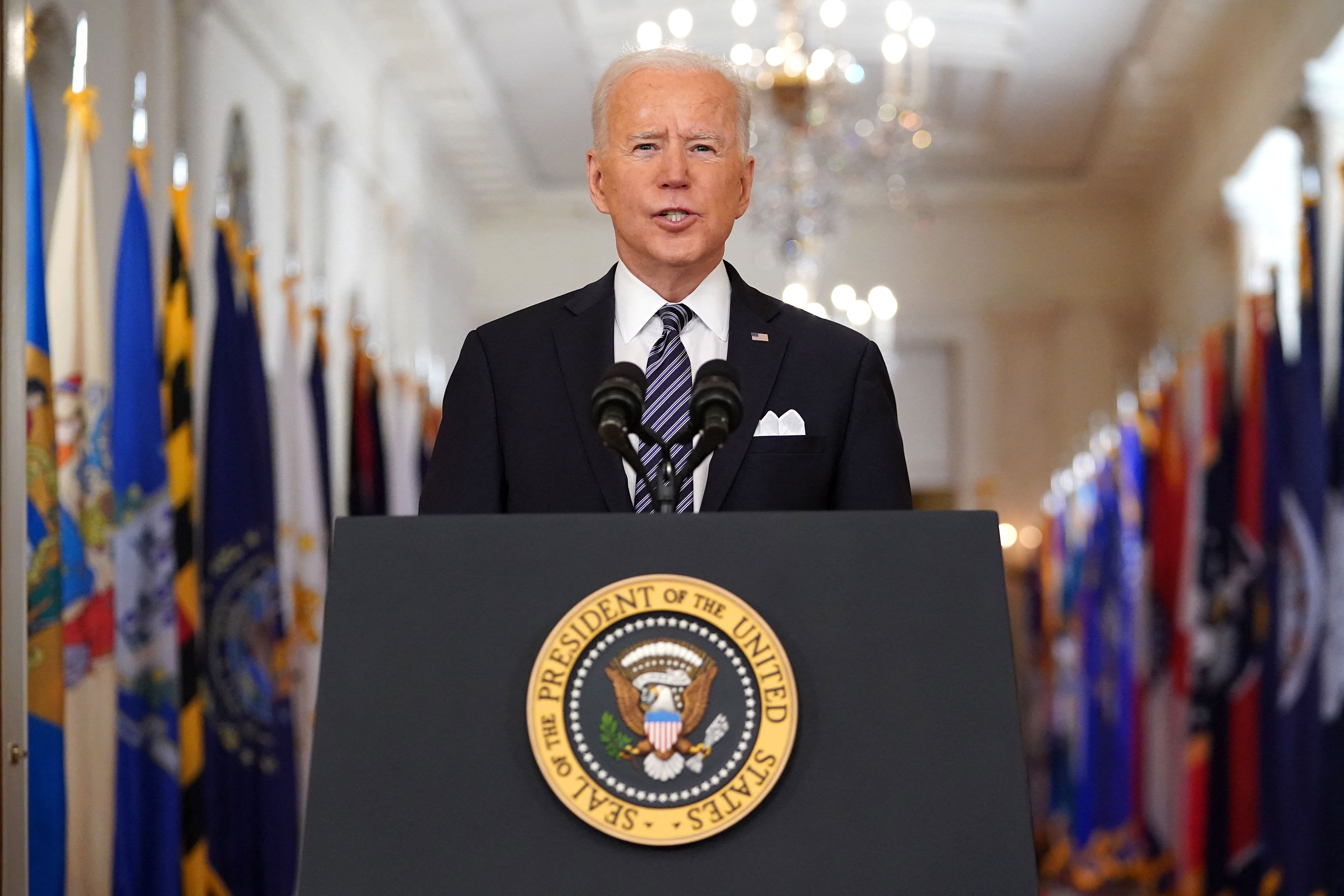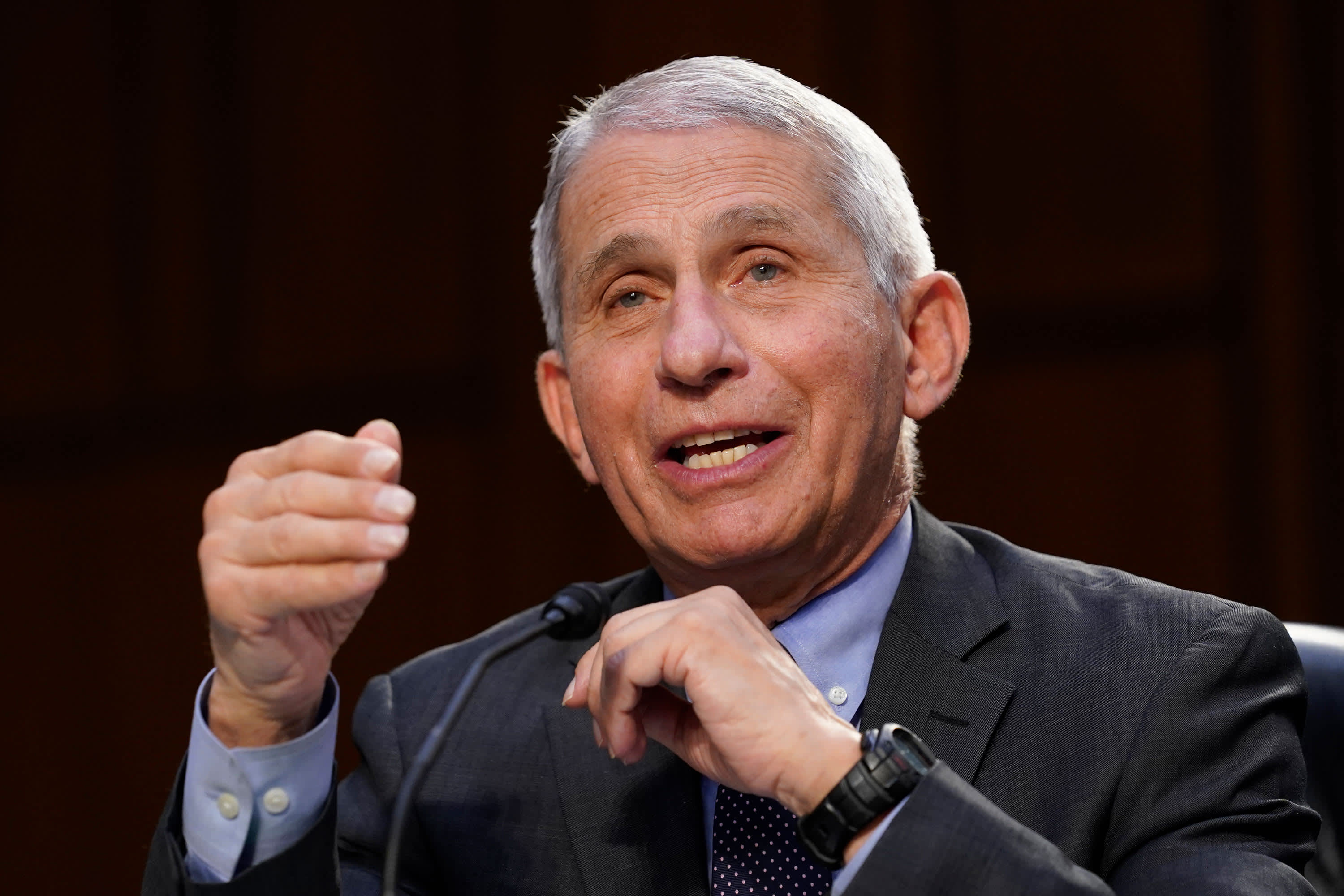With three coronavirus vaccines already approved for emergency use authorization in the U.S., how do the different available shots compare?
Pfizer and Moderna's COVID vaccines have been available in the U.S. since December, both requiring two shots for full protection. The Johnson & Johnson single-dose vaccine was authorized in February.
All three offer strong protection, particularly at preventing serious disease, and medical experts have urged Americans to get whatever vaccine is made available to you. The only caveat is for some teens. The Pfizer vaccine is the only one currently cleared for use starting at age 16.
"If you go to a place and you have J&J and that's the one that's available now, I would take it. I personally would do the same thing," Dr. Anthony Fauci said in a late February appearance on "Meet the Press." "I think people need to get vaccinated as quickly and as expeditiously as possible," he added.
Get top local stories in Southern California delivered to you every morning. Sign up for NBC LA's News Headlines newsletter.
Here's what to know:
How effective is each vaccine?
It’s hard to tell if one vaccine is more effective than another since they weren’t directly compared in studies. But experts say the vaccines are alike on what matters most: preventing hospitalizations and deaths.
J&J's single-dose shot was 66% protective against moderate to severe illness in a large international study. In just the U.S., where there’s less spread of variants, it was 72% effective. More importantly, once the vaccine’s effect kicked in it prevented hospitalization and death. J&J didn't count mild illnesses in testing.
Meanwhile, the two-dose vaccines from Pfizer and Moderna was found to be about 95% effective at preventing illness. Studies for those shots counted a COVID-19 case whether it was mild, moderate or severe — and were conducted before worrisome mutated versions of the virus began circulating. And the U.S. government’s first look at real-world data among essential workers provided further evidence that the Pfizer and Moderna vaccines are highly protective -- 90% -- against infections whether there were symptoms or not.
It is not known if any of the three vaccines prevent the spread of the virus by people who are asymptomatic.
While the overall effectiveness data may suggest the J&J candidate isn't quite as strong as the two-dose Pfizer and Moderna options, all of the world’s COVID-19 vaccines have been tested differently, making apple-to-apple comparisons nearly impossible, CNBC reported.
"If you kind of do a comparison for influenza vaccines, which we do annually, influenza's efficacy can range anywhere from 40% to 60% - and that's a good year," Monica Hendrickson, public health administrator for the Peoria County Health Department said Wednesday. "So again, something that's high public health was, you know, we were hoping for something above 40%. To get to 95%, even 65%, that's a homerun."
Hendrickson noted that the vaccines each hold a high effectiveness against death and severe illness for coronavirus.
"So, really, you're looking at a distinction that from a clinical standpoint, or from, you know, an epidemiological standpoint is very minor compared to what we really are hoping for, which is decreases in death and decreases in severe illness, where they all match up between the three vaccines," Hendrickson said. "Most important thing though is that when these vaccines come on the market, if you have an option to any of these, get one of them."
Dr. Arnold Monto of the University of Michigan, who chaired an FDA advisory panel that unanimously voted that the Johnson & Johnson vaccine’s benefits outweigh its risks, said the evidence shows no reason to favor one vaccine over another.
"What people I think are mostly interested in is, is it going to keep me from getting really sick?" Collins said. "Will it keep me from dying from this terrible disease? The good news is all of these say yes to that."
How are they different?
The Pfizer-BioNTech and Moderna vaccines differ from traditional vaccines in their use of mRNA. Instead of introducing a weakened or an inactivated germ into your body, this vaccine injects mRNA, the genetic material that our cells read to make proteins, into your upper arm muscle. It teaches your body how to make the protein that triggers antibody production so if the real virus later enters your body, your immune system will recognize it, according to the federal Centers for Disease Control and Prevention.
Unlike the Pfizer and Moderna shots, the Johnson & Johnson and AstraZeneca vaccines use a cold virus, called an adenovirus, like a Trojan horse to carry the spike gene into the body. J&J uses a human adenovirus to create its vaccine while AstraZeneca uses a chimpanzee version.
The cells make harmless copies of the protein to prime the immune system in case the real virus comes along. It’s the same technology the company used in making an Ebola vaccine.
The Pfizer and Moderna vaccines must also be kept frozen, while the J&J shot can last three months in the refrigerator, making it easier to handle. AstraZeneca's vaccine, widely used in Europe, Britain and Israel, is made similarly and also requires refrigeration but takes two doses.
What are the side effects for each vaccine?
The most common complaints associated with the three vaccines were pain at the injection site, fatigue, headache, muscle pain, nausea and some flu-like symptoms.
And while rare, some people have reported a severe allergic reactions, called anaphylaxia, after taking the Moderna or Pfizer vaccines. In most of those cases, the patient had a history of severe allergic reactions. The CDC advises people to wait around for 15 minutes after vaccination, and those with a history of other allergies for 30 minutes, so they can be monitored and treated immediately if they have a reaction. Allergic reactions have not been reported in the J&J vaccines. The National Institutes of Health has launched a study to investigate the issue.
However, the FDA and CDC is investigating reports from a small number of people who experienced "a rare and severe type of blood clot" after receiving the J&J shot. The agencies said in a joint statement issued April 13 that six women between the ages of 18 and 48, who started getting symptoms between six to 13 days after vaccination, developed a cerebral venous sinus thrombosis, or CVST, as well as low levels of blood platelets. However, more than 6.8 million doses of the J&J vaccine have been administered in the U.S., the vast majority with no or mild side effects.
Which Vaccine Is Approved for Teens?
The Pfizer vaccine is the only one currently cleared for use starting at age 16. The Moderna and J&J vaccines are currently cleared for people 18 and older.
However, Pfizer and Moderna both have completed enrollment for studies of children ages 12 and older, and expect to release the data over the summer. If regulators clear the results, younger teens likewise could start getting vaccinated once supply allows.
Are There Other Options?
Additional vaccines from AstraZeneca and Novavax could also be potentially approved for emergency use in the U.S.
On March 22, AstraZeneca announced that findings of a large U.S. trial have shown that its two-dose vaccine used in many countries was 79% effective in preventing symptomatic illness and 100% effective against severe disease and hospitalization. However, the company has faced questions about the exact degree of its effectiveness indicated by studies. But experts agree those shots, too, protect against the worst outcomes.
The company said it plans to seek emergency use approval from the FDA in early April.
However, it could face an uphill battle for authorization after the European Union’s drug regulator said there was a “possible link” between the AstraZeneca vaccine and a very rare type of blood clot that occurs together with low blood platelets, one that seems to occur more in younger people. The European Medicines Agency stressed that the benefits of receiving the vaccine outweigh the risks for most people. But several countries have imposed limits on who can receive the vaccine; Britain recommended that people under 30 be offered alternatives.
Novavax, which is the lesser known of the remaining vaccines, is also on the horizon.



